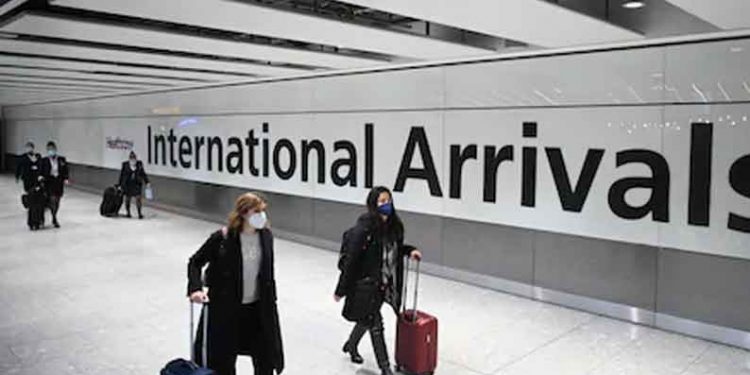Visiting London for the first time and worried about what will you do as a first-timer? You’re in the right place because, with these travel tips, you’ll be more prepared and organized for your journey.
London is a popular tourist destination and it can be quite overwhelming, especially during bank holidays and school breaks. But, if you visit London at the right period, have at least a week in the city, and choose what you want to see and do ahead of time your first trip to London will be unforgettable!
When to Visit London
The best weather in London is during the late spring/early summer and late summer/early fall seasons. Typically, May and June or September and October are the best months to visit London because the weather is warm but there are fewer visitors.
The low season in London is during winter except during the Christmas holidays. Late autumn and January or February usually are the less-crowded months and you can also find cheaper prices.
Summertime is generally the high season. The locals are taking advantage of the weather as well as the tourists. Although the rain and humidity are unrelenting, there are a number of activities going on in the city.
What to Pack
Layers are best when it comes to clothing. This is because winters can be really cold and summers can also be chilly. In the UK, weather is not always predictable by the season and it’s raining a lot during both winter and summer. But one thing is for sure, it will rain, so bring a sturdy umbrella!
Even if you are visiting London in the summer, you should bring warm and light clothes. It’s good to have a few sweaters, a waterproof jacket or a cardigan, and even rain gear because the weather can get quite chilly.
Keep in mind that the city is very walkable and this gives you the chance to explore many different areas and attractions. Remember to bring a pair of comfy shoes and walk as much as you can.
Where to Stay in London
To reduce your travel time, it’s best to be as central to London as you can be and look for a location near a tube station. You will be able to easily travel to and from your preferred locations.
If you don’t stay in Central London you will have to use public transport every day to and from your hotel or London sights. Meaning that the costs will be more or less the same. It depends on what you want to do and see but if your goal is to make the most out of London consider staying in the center.
If you have more than a week consider taking the train and leaving London for a day or two to explore the suburbs of the city. Richmond, Greenwich, and Hampstead Heath are considered the greenest London areas.
Best London Neighborhoods for First-timers
Despite the fact that few places in London are village-like neighborhoods, there are various areas that offer different things and have distinct vibes. This will help you split up your “things to do” into different sections according to your preferences.
Belgravia, Kensington, Shoreditch, Camden, and Covent Garden are considered the most centrally located areas with lots of sightseeing, nightlife, and activities. If you want to avoid crowds you can choose a hotel in the suburbs but you will have to use public transit.
The West End, South Bank, and the City of London are the three main, interconnected neighborhoods that lie on either side of the River Thames and are the focus of most visits, particularly for first-time visitors, but there are many other places that are worthwhile exploring.
Being in London for just a few hours or days means carrying your luggage around the city or storing it at the hotel. Hotels or hostels may have limited availability and aren’t always safe. Fortunately, Stasher has you covered and offers multiple safe and convenient luggage storage locations throughout London to safely store your luggage for as long as you want with just £4.95 per bag per day!
Check the Free Things to do in London
Knowing that there are many free activities and sights in the city is helpful because the trip can be quite expensive. Fortunately, many museums and galleries are free including the British Museum, Tate Modern, Grant Museum of Zoology, and Natural History Museum.
Other great free things you can do is to visit London’s markets like Borough Market, Brick Lane, and Portobello Market as well as have your picnic or engage in sports activities in one of London’s many parks.
Getting Around London
Fortunately, London has many public transportation options including the Tube, buses, trains, and boats. Prefer to use public transit than drive into the city center because London is known for its traffic jams.
You can also buy an Oyster Card which is a simple method to reduce the cost of public transit. You can buy it online, load money onto it, and use it to travel cheaper.
With your credit card, you can access London’s public Santander bicycle system. There are numerous bicycle lanes that have been installed throughout the city and you can use the app to locate the nearest access points. It’s also cheap; starting at £2 per day.
Get Off the Beaten Track
Most “Must-see and must-do” guides include London’s most popular attractions. Of course, you’ll go to the ones you want to but try to visit during off-peak hours. As for the pubs and restaurants, keep an eye on detail and prefer the hidden gems instead of the central and touristy places.
Street food markets, music venues, events, performances, and concerts are abundant and luckily there are numerous London guides that will help you choose according to your preference and the time of your visit.













